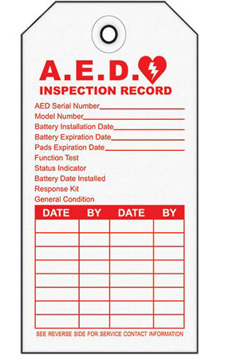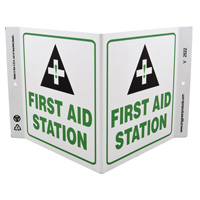



Find all of your laboratory and workplace safety supplies at Safety Emporium!
 Hypergolic |
 Glossary Index |
 Hypoglycemia |
| MSDS Topics |
Free Sites | FAQ's | Regulations | Glossary | Software | Suppliers |
| Books | Forum | Poll | Fun stuff | Quiz | Store | |
| Understand your MSDS with the MS-Demystifier | Search ALL our MSDS info | |||||

Get your PPE such as made in USA NIOSH-approved N95 masks from Safety Emporium.
Systolic blood pressure is the force exerted when your heart beats and diastolic blood pressure is the force when your heart is resting between beats. Blood pressure is expressed as systolic "over" diastolic and is written with a slash; for example 132/70 means the systolic reading is 132 and diastolic reading is 70 mm Hg.
Your heart is a pump that contracts and relaxes to force blood through your arteries to all parts of your body. Blood pressure is the force of the blood against the walls of the arteries. Too high of a pressure can cause long-term damage and too low of a pressure will not provide sufficient blood flow. Just as you have a pressure gauge on your car to make sure it is operating in the proper range, so should you keep track of your blood pressure to ensure your body is, too.
Elevated blood pressure is disturbingly common. Between 1 in 3 and 1 in 4 people have hypertension. Incidence of hypertension is significantly higher in African-Americans than in other racial groups. The chances of developing hypertension are increased for individuals who:

Get your AED signs, tags, and other first aid products from Emporium.
Hypertension can also be caused by a variety of other medical conditions. These cases are referred to as secondary hypertension. In other cases, there is no known cause (idiopathic) and the condition is sometimes called essential hypertension.
Adverse consequences of chronic hypertension may include.
Uncomplicated hypertension generally has no symptoms, so it is usually diagnosed through regular medical check-ups. Elevated blood pressure over several successive visits yields a diagnosis of hypertension or prehypertension. Prehypertension should be taken seriously as it can often progress to hypertension if the risk factors are not controlled.
To prevent or reduce (pre)hypertension, doctors generally recommend an improved diet, regular exercise, and, if applicable, losing weight or quitting smoking. Diets rich in fruits, vegetables, fat-free dairy foods, and low in fat and sodium tend to lower blood pressure. Limiting consumption of alcohol can also help lower blood pressure, however moderate alcohol use has certain cardiovascular (heart and circulatory system) benefits.
When these lifestyle changes are not sufficient to control hypertension, prescription medication is usually required. There are many different classes of antihypertensive medications, each working by a different mechanism. For example, diuretics such as hydrochlorothiazide are a cheap and effective drug for many people. While diuretics can help lower blood pressure by removing salt and extra fluid from the body, the actual mechanism of how they reduce blood pressure is not fully understood.
Other antihypertensives work by slowing the heartbeat down or relaxing and widening the blood vessels. Medications that work in this way include: beta blockers, alpha blockers, ACE inhibitors, ARBS, calcium channel blockers, alpha-beta blockers, nervous system inhibitors, and vasodilators. In some cases, combinations of two or more antihypertensives may be required to bring your blood pressure under control.

We have all kinds of safety wall signs at Safety Emporium.
NOTE: We may collect a share of sales or other compensation from the links in the following list:
Exposure to some chemicals, such as nephrotoxins, can cause or aggravate hypertension. Exposure to other chemicals may cause a victim to go into shock, a symptom of which is very low blood pressure.
Consult Section 11 (Toxicological information) of your Safety Data Sheets to identify the health effects of the materials you work with as well as Section 8 (Exposure controls/personal protection). Use engineering controls and/or personal protective equipment to reduce your exposure.

We have all kinds of first aid signs, posters and labels at Safety Emporium.
See also: diuretic, nephrotoxin, syncope.
Additional definitions from Google and Onelook.
Entry last updated: Sunday, January 1, 2023. This page is copyright 2000-2025 by ILPI. Unauthorized duplication or posting on other web sites is expressly prohibited. Send suggestions, comments, and new entry desires (include the URL if applicable) to us by email.
Disclaimer: The information contained herein is believed to be true and accurate, however ILPI makes no guarantees concerning the veracity of any statement. Use of any information on this page is at the reader's own risk. ILPI strongly encourages the reader to consult the appropriate local, state and federal agencies concerning the matters discussed herein.